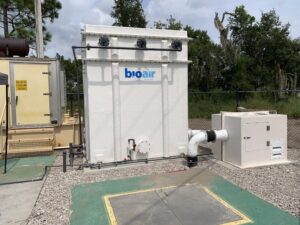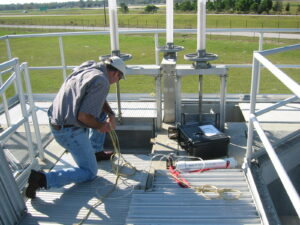What Works and Why: Comparing Industrial Odor Control Treatments by Process Type
 Odor control in industrial settings isn’t just about compliance—it’s about understanding how different processes create specific odor challenges. At Webster Environmental Associates (WEA), we take a process-focused approach. Instead of applying a single treatment across all facilities, we match our solutions to how each process behaves. This allows us to deliver more effective and efficient odor control.
Odor control in industrial settings isn’t just about compliance—it’s about understanding how different processes create specific odor challenges. At Webster Environmental Associates (WEA), we take a process-focused approach. Instead of applying a single treatment across all facilities, we match our solutions to how each process behaves. This allows us to deliver more effective and efficient odor control.
1. High-Temperature and Combustion-Related Odors
Some of the most difficult odors come from processes involving heat and combustion. These include metal finishing, asphalt production, chemical curing, and resin processing. The odors released often include high-strength volatile organic compounds (VOCs) and other combustion byproducts.
WEA typically recommends the following solutions:
- Thermal oxidation: This treatment breaks down VOCs at high temperatures and is one of the most reliable methods for handling strong and complex odor compounds.
- Chemical scrubbers: Used after thermal oxidation as a polishing step to remove remaining pollutants.
- Monitoring systems: Necessary to track emissions and verify regulatory compliance.
These applications often involve significant airflow and energy demands, so we carefully size and design each system for both performance and cost efficiency.
2. Wet Processes and Wastewater Streams
Many manufacturing operations use water as part of their process. Food and beverage plants, pulp and paper mills, and similar facilities generate odors through anaerobic conditions in holding tanks, clarifiers, or other water-based systems.
The most common odor-causing compounds in these processes are hydrogen sulfide and ammonia. WEA applies a combination of odor control methods based on how the facility is structured and operated.
Our treatment options include:
- Chemical additives like magnesium hydroxide to raise pH and suppress sulfide formation.
- Biological treatment such as biofilters or biotrickling filters, which remove odors biologically after they’re collected.
- Covers and enclosures for tanks and channels to prevent odors from escaping into the surrounding environment.
Each of these treatments plays a role in reducing odor complaints and meeting permit limits.
3. Dry and Organic Material Handling
Some facilities work mostly with solids or organic matter, which produce more diffuse odors. Composting operations, animal rendering plants, and grain processors are good examples. These odors can spread more easily, especially in outdoor environments.
For these applications, we often recommend:
- Misting systems that neutralize odors in the air using chemical or biological agents.
- Custom enclosures with ducting to collect air and send it to a treatment system.
- Carbon filtration or media-based scrubbers, which are effective for certain organic odors when air is collected properly.
Because weather can affect how odors behave, we also take seasonal variations into account when planning these systems.
4. Multi-Stage Systems for Mixed Emissions
 In many cases, no single treatment method is enough. Some facilities generate a mix of gases, odors, and particulates. For example, a recycling plant may release VOCs, sulfur-based odors, and fine dust at the same time.
In many cases, no single treatment method is enough. Some facilities generate a mix of gases, odors, and particulates. For example, a recycling plant may release VOCs, sulfur-based odors, and fine dust at the same time.
When emissions are complex, WEA designs multi-stage treatment systems. These may include:
- Covers and enclosures at key sources to contain the odor before it spreads.
- Air collection ductwork that sends emissions to one or more treatment units.
- Scrubbers or biofilters selected based on the mix of odor compounds present.
- Real-time odor monitoring to measure how well the system is performing and make adjustments as needed.
Our engineering team works closely with clients to test airflows, identify emission sources, and design a system that fits the layout and operational needs of the facility.
5. Why the Right Fit Matters
Many facilities we visit have odor control systems that don’t work as intended. That usually happens when the treatment method doesn’t match the process or the odor source wasn’t properly evaluated.
Poorly matched systems can lead to:
- High operating costs without much odor reduction.
- Regulatory penalties or permit violations.
- Continued community complaints, even after installing equipment.
We help facilities avoid these outcomes by starting with a field assessment. We track where odors originate, how they behave, and how process variables affect them. This data guides every decision we make—from selecting the right equipment to sizing each component.
Schedule a Process Review with WEA
If you’re dealing with odor problems at your facility, it may be time to take a closer look at the source. Matching the right treatment to the process is key to long-term success. At WEA, we offer more than off-the-shelf solutions. We offer a process-driven strategy built on experience, testing, and engineering expertise.
We invite you to contact us for a site review or strategy session. Let’s talk about how we can help you choose the right industrial odor control treatments for your operations.
